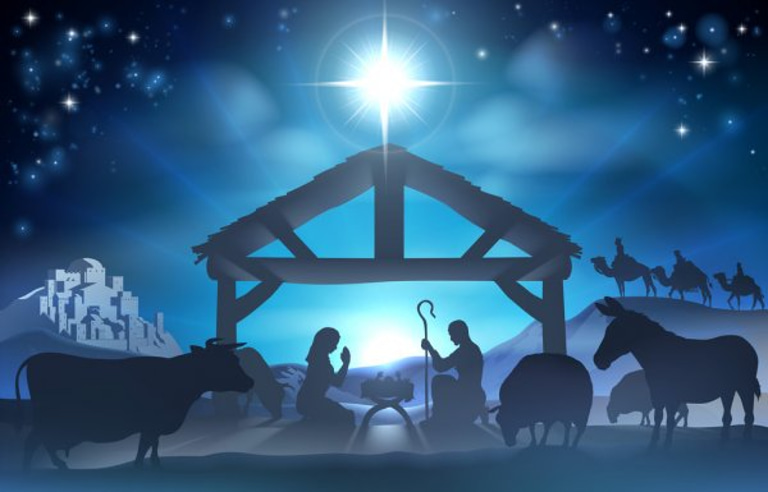Exploring Nativity Traditions Around the World
Discussion on how Nativity traditions vary around the world.
NATIVITIES AROUND THE WORLD
Grace Callahan
8/19/20244 min read
FAQ: Global Nativity Traditions
1. What is the nativity scene and why is it important?
The nativity scene, or crèche, depicts the birth of Jesus in Bethlehem and is a central symbol of Christian Christmas celebrations. It reflects both religious faith and local cultural identity through its diverse global interpretations.
2. How do nativity scenes differ around the world?
Nativity scenes vary by country and culture. Italy’s presepe includes village life, Spain’s belén may feature the humorous caganer, and Mexico’s nacimiento often includes devils and expansive landscapes. In the U.S., manger scenes range from simple displays to full live reenactments.
3. What unique cultural elements are added to nativity scenes globally?
Many regions incorporate local dress, customs, and symbolism. Peru includes Andean figures and niño Manuelito, Catalonia adds the caganer, and African and Asian countries integrate indigenous art, music, and attire into their displays and plays.


Introduction
For me, the Nativity scene—whether you call it a crèche, manger scene, or belén—is so much more than a Christmas decoration. It’s a window into the moment when heaven touched earth in a humble Bethlehem stable. Across the globe, families and communities bring this sacred story to life in ways as varied as the landscapes and cultures they come from.
What fascinates me is how these displays—whether hand-carved wood, colorful clay, or even life-size outdoor Christmas Nativity displays—carry layers of history, artistry, and local tradition. The materials, figures, and even the surrounding scenery often reflect the identity of the people who create them.
Let’s travel together through some of the world’s most beautiful and unique historical Nativity traditions—and perhaps find inspiration for your own display this year.
Europe
In Europe, the Nativity—or crèche—often takes center stage in churches, homes, and town squares. Whether it’s a simple hand-painted set or a grand animated display with moving shepherds and twinkling stars, the heart is always the same: honoring the humble conditions of Christ’s birth.
Italy – The Presepe
I have to start in Italy, where the presepe tradition dates back to Saint Francis of Assisi in the 13th century. Italians often expand far beyond the stable, adding bustling markets, village streets, and everyday scenes to remind us that Christ came into our ordinary world. Some even get playful with edible presepi made from bread, pasta, or chocolate. The most famous? The Vatican’s St. Peter’s Square presepe, revealed on Christmas Eve—a true blend of art, devotion, and celebration.
Spain – The Belén
In Spain, the belén often grows into an entire miniature world, telling multiple stories from Christ’s life. One quirky and beloved detail is the caganer, a hidden figure representing fertility and good luck, tucked in for children to find. It’s a reminder that joy and humor have their place in the season too.
Germany – The Krippe
Germany’s Krippe can be rustic or ornate, often reflecting local architecture and dress. I love how the tradition extends into Krippenspiel—Nativity plays that invite children and adults to step into the story. Whether carved from wood or built from paper, these sets do more than decorate; they draw you in to reflect on the message of the Nativity.
The Americas
Across the Americas, the best Nativity sets for families often blend biblical imagery with vibrant local culture. Here, you’ll see everything from clay figurines in traditional dress to outdoor displays with music and lights.
Mexico – The Nacimiento
In Mexico, the nacimiento often grows into a vast scene with mountains, rivers, and plants. Sometimes you’ll even spot a figure of the devil, reminding viewers of the struggles Mary and Joseph faced. The tradition pairs beautifully with posadas, candlelit processions that reenact their search for shelter, ending with the unveiling of the Nativity.
Peru – The Pesebre
Peru’s pesebres are among the most colorful I’ve seen, with the Holy Family joined by Andean farmers, musicians, and dancers. The Niño Manuelito—baby Jesus in a poncho and hat—is placed in the manger on Christmas Eve, then carried through the neighborhood on Epiphany. It’s a touching blend of faith and cultural pride.
United States – The Manger Scene
In the U.S., manger scenes range from simple tabletop sets to elaborate outdoor Christmas Nativity displays with spotlights and carols. Live Nativity events—complete with real animals—are especially moving, especially when paired with Christmas pageants that make the story interactive for children.
Asia & Africa
In the Philippines, the belen takes pride of place during Christmas, often dressed in Filipino attire and surrounded by local scenery. In Ethiopia and Nigeria, Nativity plays and handcrafted displays blend Christian tradition with indigenous music, color, and symbolism. While less common than in Europe or the Americas, these growing traditions are vibrant reminders that the Nativity belongs to the whole world.
Conclusion
The beauty of the Nativity is that it’s both universal and deeply personal. No matter where you stand on the globe, this sacred story is told in ways that reflect local history, artistry, and devotion. Exploring these differences doesn’t just deepen our appreciation for the craft—it reminds us of the shared hope at the heart of Christmas.
Pro Tip: If you’re looking to start—or add to—your own collection, consider incorporating a figure or detail inspired by one of these traditions. A shepherd in Andean dress, an Italian village scene, or even a miniature posada procession can make your display a conversation piece that honors the global family of faith.

